Dogs are considered the most loyal beings known to humans. No matter what the situation, these little partners will always protect you. Out of all dog species, the German Shepherd is well known for its intelligence and aggression.
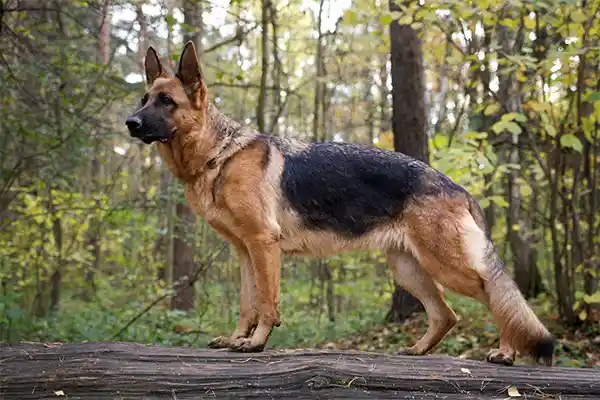
That’s the reason they can be molded into guard dogs. The good thing is that your German Shepherd also has the potential to be a guard dog. All he needs is training!
You can easily train your GSD as a guard dog, but feeding the best dog food German Shepherds won’t do the trick; you need to guide them through the process to get the right results.
Do you want to know how to train a German shepherd?
For centuries, people have kept dogs as pets. In fact, both humans and dogs lived and evolved together for years. Earlier, the parameters of a good pet may have depended on its hunting capability or its ability to control sheep herds. But nowadays, a good pet means a less aggressive pet.
Out of all dog species, the German Shepherd is one of the most popular. It is the first priority of pet lovers. This species is known for its high temperament and is often used as a guard dog by the military.
You may be shocked to know that the German Shepherd isn’t natural; In fact, it is a result of a hybrid developed by Max Von Stephanitz in 1899.
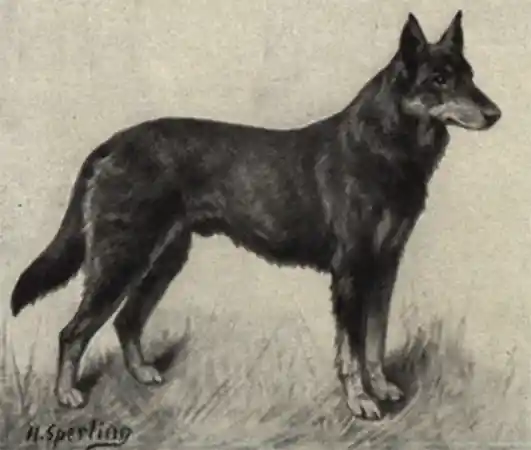
Horand was the first German Shepherd. The German Shepherd was initially a herding dog species used by farmers for herding sheep.
Alastian and Shepherd are some of the other names for German Shepherds.
There are different categories of German Shepherds on the basis of color:
For now, enough about Cynology!
From all the facts about a German Shepherd, it is clear that this species is the most suitable one for a guard dog. You don’t have to worry about how to train a German shepherd. With the right training plan, you can easily convert your German Shepherd into a guard dog, but you should know what type of guard dog you want your German Shepherd to be.
We can divide guard dogs into three categories; let’s have a look at each of them.


When it comes to attacking dogs, German Shepherds are the first priority. They have all the qualities of sentries and watchdogs.

Some people are curious about how to train a German shepherd to attack, so you don’t have to give your dog separate training for that.
Attack dogs are able to distinguish between friend and foe.
They’ll defend you and attack someone if they find that person a threat to you! Keep in mind that we are not referring to military dogs, as there is a separate training method for them in the military. These tips are for non-military purposes.
We divided your German Shepherd’s training program into two parts:
Let’s One by One Discuss Both of them!
This is the First Step!
This training is necessary for all German shepherds if they want to become guard dogs. Without basic training, it would be very hard for the dog to master attack mode.
You’ll be surprised to know that the pattern recognition ability of an adult German Shepherd is equivalent to that of a 10-year-old kid! So you just need to develop a dedicated approach to your dog’s training. With a good training plan, your dog can be fully trained within a couple of months.

The ideal age for training a German Shepherd Puppy is 7-8 Weeks. If you start training your dog at such an early age, he will definitely become disciplined later down the line. Just start playing with your puppy, and walk the dog daily if possible.
Your Dog is smarter than you think; just give him some time. It may take a week for your dog to remember the pattern, and he will develop a new habit. They can easily remember all the steps if they are repeated enough times daily.
This method is used by experts to train military dogs. Every year, thousands of German Shepherds join the military as guard dogs on a large scale, so this method is 100% effective for this breed.
All you have to do is add small rewards at the end of each task. It would be a piece of cake if you already divided each task into steps; just add small rewards at the end of each task. You can add special dog food as a reward.

It is almost the same way we learned a lot of things from our parents.
Dogs are social animals!
They spent centuries living in the wild with their groups. Most of the dogs are used to living in the wild with other dogs. Socialization is in their DNA; we can’t expect good behavior from them after isolating them from their group.
In order to train a dog, he must be exposed to tons of strangers and dogs. As with humans, dogs also understand the behavioral patterns of different individuals, so socialization is a must.

Keep in mind that walking the dog certainly does not fall under the category of socialization. In the United States, there are various dog socialization clubs where you can socialize your dog for free.
Dogs love to play with toys. As humans spend their childhood playing with toys, a dog also needs toys in his childhood. By using these toys, you can decrease your dependency on the dog and provide him with an environment where he can enjoy himself.
This part is one of the most important, and it needs to be deliberately implemented in your training program.
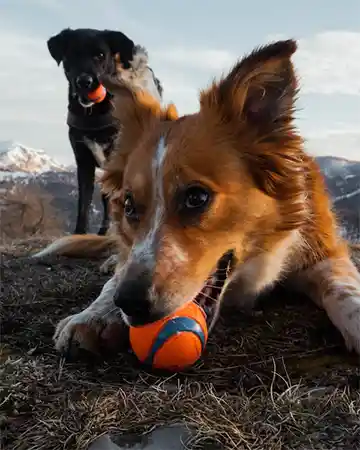
There are tons of toys on the market that are exclusively available for dogs, but our team selected the best-suited toys for German Shepherds:
Before you train the dog, you have to first understand him. There is only one way to understand your dog, i.e., spending time with him deeply!
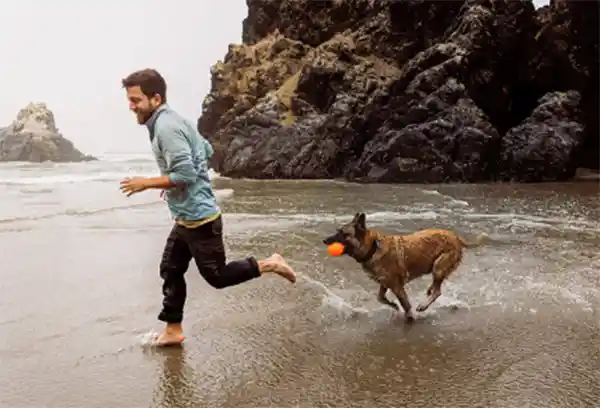
Teach your dog some of the basic commands like sit, stay, and run.
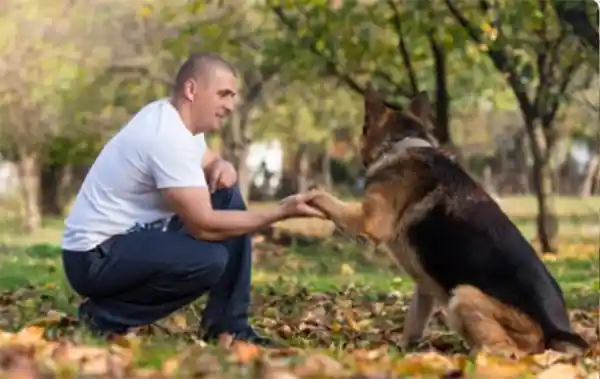
It could take a week for the dog to get used to your commands. As we discussed earlier, you can also use different voices for different commands; this will make it easy for the dog to learn the patterns, and ultimately, you’ll get better results.
Sometimes dogs show aggressive behavior while eating, indicating that there is something they don’t like in the food. In cases of food aggression, try changing the brand of dog food.
Each dog has a unique taste, so try to give your dog his favorite food.
Don’t worry; we simplified things for you. Click to purchase the best German shepherd food. Check out our review on Sundays for Dogs to know about a healthy meal for your GSD.

# Pro Tips
As your dog has now completed the basic training, it won’t be hard for him to learn this advanced training. Luckily, the steps are not completely different; in fact, most of the facts are the same.
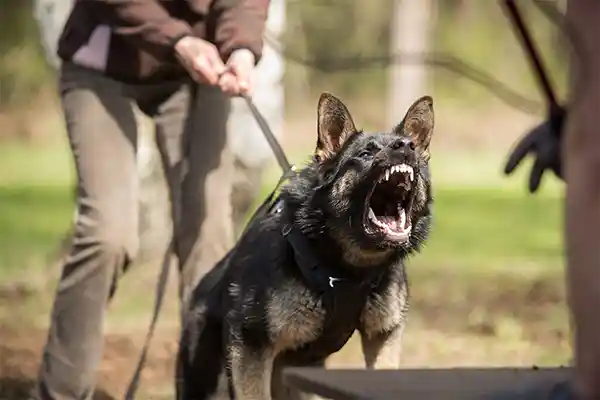
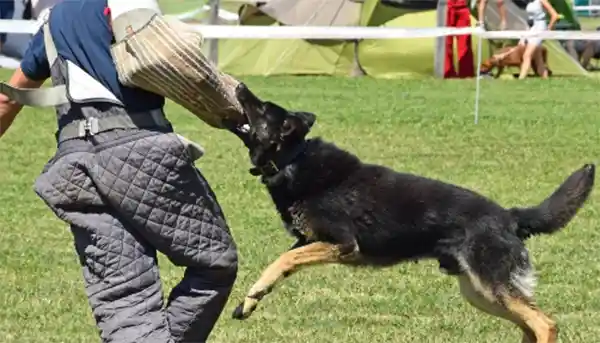
| Guard Dogs | Attack Dogs |
| They Are Family Friendly | They Are Not Family Friendly |
| Can Be Kept as Pets | Can’t Be Kept as Pets |
| Have Strong Instincts | Need Special Diet |
| Intelligent and Competent | Needs a Lot of Exercise |
Remember that effective German shepherd protection training requires a thorough grasp of your dog’s behavior. Therefore, in addition to training advice, we’ve included certain behavioral patterns that can improve your relationship with your dog.
Training is a two-way process; first, you have to understand your dog completely, and then only you can expect good results. Without a proper understanding of a dog’s behavior, it would be difficult for you to learn how to train a German shepherd.
Our expert team gathered some common German shepherd behaviors. By understanding them, you can train a German shepherd in a smooth way.
Usually, pet dogs replicate digging at night. Just give your dog proper attention and involve him in your conversations if your dog starts doing this on a daily basis.
Read Next: 5 Best Heavy Duty Crates for Anxiety Dog Separation – Strong, Comfortable and Easy to Clean
Ans: Yes! They are highly intelligent and adaptable. With the right training plan, training a German Shepherd will not be hard.
Ans: German Shepherds are well-known guard dogs. It’s in their instincts, so all you have to do is follow a normal training plan for German shepherds. They’ll automatically transform into guard dogs.
Ans: Of course! Everyone wants to protect their loved ones. So if you have a strong bond with your dog, he will definitely protect you even without training.
Sources:
Share